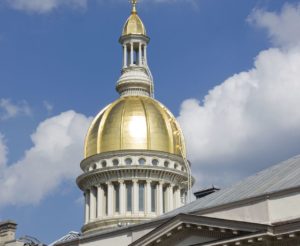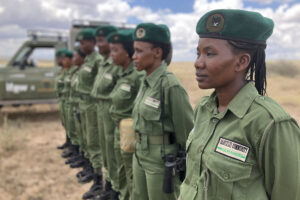CLEVELAND, Ohio — Let’s talk about identity.
I have always believed there is no one person who can be an ambassador for an entire race. For people of color, that probably goes without saying. But it is something that some, especially those who are not Black, Indigenous or people of color, might not consider when they speak to us. That’s why I think it is important to share this perspective.
I can only speak for my experience as an Indigenous woman who grew up in a city with so few Native people that I was often the only one in the room. I can speak to my multicultural experience as a half-Anishinaabe and half-Salvadoran woman who grew up in Cleveland. Still, there are parts of the Indigenous experience I acknowledge I will never know. I did not grow up on a reservation. I did not grow up in a border town. I am not LGBTQ or Two Spirit. These are all topics for another time. Indigenous identity is mired with the political labels and constructs of colonizers: blood quantum, tribal enrollment, calling oneself Native American versus American Indian, just to name a few.
That does not mean, however, there are not universal commonalities to the Indigenous experience or a solidarity with Black folks and other people of color. And I am constantly learning more about these intricacies from others.
Recently, an admired colleague of Indigenous and Black heritage reached out to me about my earlier column on land acknowledgments — reflections or statements, either spoken or written, recognizing the original peoples of the specific lands one calls home. She politely encouraged me to reconsider the way I framed one area of my argument.
In that column, I had written “Let me preface the rest of this column with this fact: If you are not Native American, you are an immigrant or the descendant of immigrants.”
She encouraged me to note that Black Americans do not fall into the “immigrant” category in the traditional sense that conjures images of newcomers at Ellis Island or the like. Many Black Americans’ ancestors did not choose to come to the United States. They were forcibly brought here. Immediately, I felt terrible for not having considered that phrasing.
I thanked her and thought about how important it is to acknowledge the solidarity between Indigenous and Black peoples – which led to this column.
There’s a long history of Black-Indigenous intersectionality in this country. There is a shared history of systemic oppression, stemming from injustices that range from the enslavement of Black and Indigenous peoples, to the forced sterilizations of Black and Native women, to systemic educational inequities. And born of that oppression is a modern-day solidarity and shared interest in dismantling systems founded by colonizers.
In many ways, the Civil Rights Movement paved the way for the American Indian Movement of the late 60s and 70s. Just as Black soldiers served this country at higher rates proportionally, Native Americans entered the Armed Forces at high rates proportional to our total population. As recently as the protests following the murder of an unarmed Black man, George Floyd, by police in Minnesota in 2020, there were Native people who joined protests in solidarity. Police brutality is a significant issue for many communities of color, and Indigenous peoples are no exception. These are only a few examples of the solidarity between the two populations. This is not to say that at different points in history including today, Black-Indigenous relations did not amount to conflict.
If you are interested in reading more on this topic, as I certainly acknowledge I am only scratching the surface here, I recommend reading Kyle T. Mays’s book “An Afro Indigenous History of the United States.” Mays has his own Cleveland connection, according to his book, with a Black mother who hails from Cleveland. His father is both Black and Saginaw Anishinaabe, a cousin tribe of sorts to my own. He provides not only an excellent historical account of the relationship between Black and Native American peoples in the U.S., but he offers his firsthand experiences and observations.
So again – it is important to acknowledge that even as a Native person, I don’t know everything about the Indigenous experience. No one can. We are not a monolithic people. And the experience of Black Indigenous peoples is unique and important to acknowledge, no matter how much that story has been overlooked in history books.
A Clevelander from the Slavic Village neighborhood, Nancy Kelsey started her career in journalism before working in communications. Her biggest loves are her husband, family, dogs, volunteering, traveling, writing, learning about other cultures and sharing her own. You can reach her at nancy.kelseyPD@yahoo.com.




